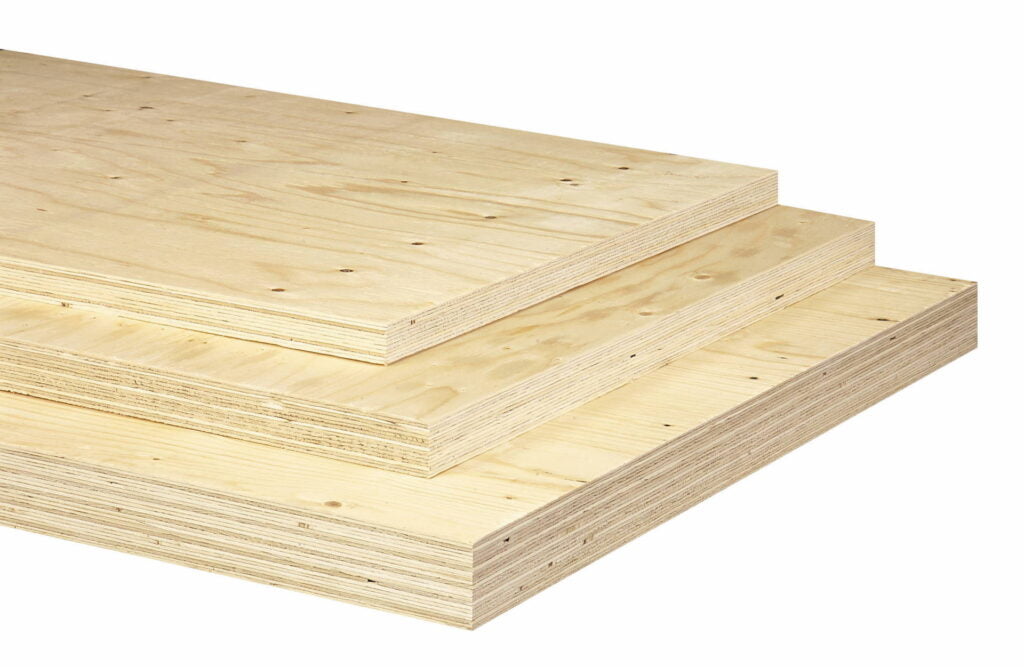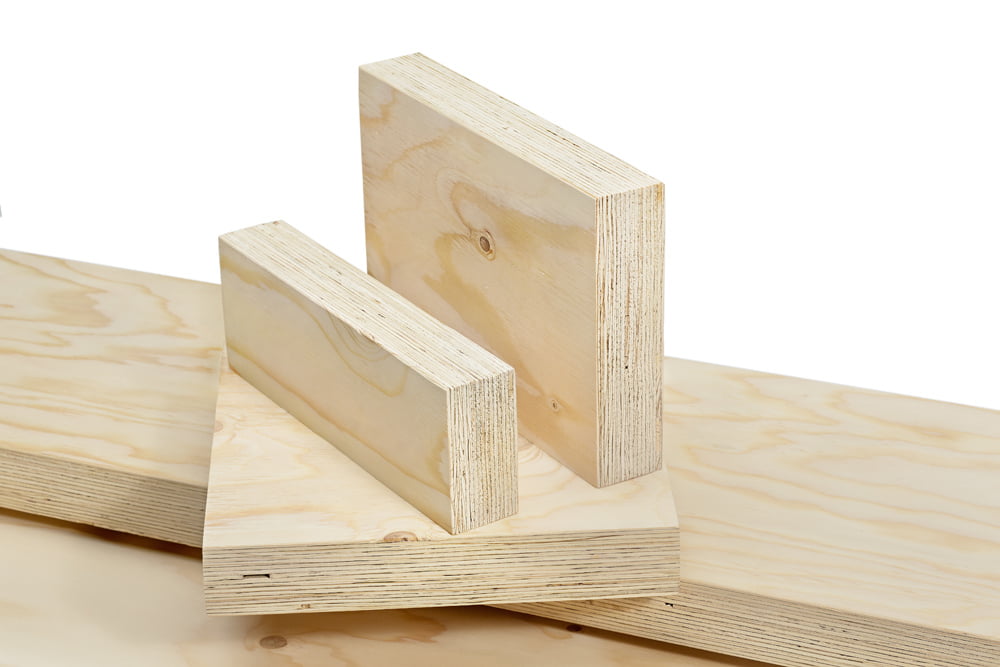Laminated veneer lumber (LVL)
Laminated veneer lumber (LVL) is a structural wood product made by gluing together lathe-turned veneers.
Laminated veneer lumber is used in all new-build and renovation work and for industrial purposes. Examples of use include load-bearing columns and beams, trusses, ring beams and components for the door and window industry.
In Finland, laminated veneer lumber is made by gluing together 3-mm thick spruce veneers. Depending on the LVL product, all the veneers are with same the grain direction lengthways or some of the veneers are glued crosswise.
Normally the veneers are not sanded or filled, but LVL can be made to order with the surface veneers sanded. Laminated veneer lumber is available in various finishes and also pressure-impregnated to class AB. Laminated veneer lumber is specified according to Finnish Standard SFS-EN 14374.
Maximum width of LVL is 2.5 metres. Maximum length is 24 to 25 meters depending on the manufacturer. Transport problems usually limit the length to approx. 25 metres. The thickness of the beams varies from 27 to 75 mm. Standard heights vary by manufacturer.
In horizontal construction, typical centres for LVL are from 5 to 12 metres. As well as floor and roof construction, LVL can be used for trimming and supporting beams and for stiffening. In fire, the charring speed is o.6 mm/min.
Finnish laminated veneer lumber is made by gluing 3 mm thick spruce veneers together. Depending on the veneer product, all the veneers are in the longitudinal direction or some of the veneers are glued crosswise.


